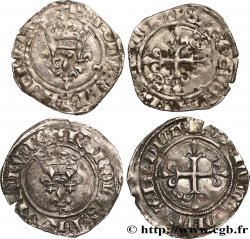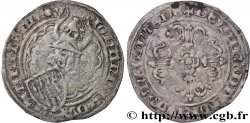Live auction - bry_455647 - CHARLES VI LE FOU ou LE BIEN AIMÉ / THE BELOVED or THE MAD Gros aux lis sous une couronne ou grosus turonus n.d. Tournai
You must signin and be an approved bidder to bid, LOGIN TO BID. Accounts are subject to approval and the approval process takes place within 48 hours. Do not wait until the day a sale closes to register. Clicking on "BID" constitutes acceptance of the terms of use of cgb.fr private live auctions.
Bids must be placed in whole Euro amounts only. The sale will start closing at the time stated on the item description; any bids received at the site after the closing time will not be executed. Transmission times may vary and bids could be rejected if you wait until the last second. For further information check the Live auction FAQ
All winning bids are subject to a 18% buyer’s fee.
All winning bids are subject to a 18% buyer’s fee.
| Estimate : | 500 € |
| Price : | no bid |
| Maximum bid : | no bid |
| End of the sale : | 12 December 2017 15:13:55 |
Type : Gros aux lis sous une couronne ou grosus turonus
Date: 03/11/1413
Date: n.d.
Mint name / Town : Tournai
Metal : silver
Millesimal fineness : 718 ‰
Diameter : 27,5 mm
Orientation dies : 1 h.
Weight : 3,46 g.
Rarity : R1
Coments on the condition:
Ce gros est frappé sur un flan large et légèrement irrégulier. Exemplaire recouvert d’une patine grise avec de hauts reliefs. Quelques petites faiblesses de frappe sont à noter
Catalogue references :
Obverse
Obverse legend : + KL': DI': G': FRA'CORV': REX, (PONCTUATION PAR TROIS POINTS SUPERPOSÉS) ; LÉGENDE EXTÉRIEURE : + SIT: NOMEN: DOMINI: BENEDICTVM, (PONCTUATION PAR DEUX ANNELETS SUPERPOSÉS).
Obverse description : Croix.
Obverse translation : (Charles, par la grâce de Dieu, roi des Francs ; béni soit le nom de notre seigneur Jésus-Christ).
Reverse
Reverse legend : + GROSVS: TVRONVS, (PONCTUATION PAR TROIS POINTS SUPERPOSÉS).
Reverse description : Trois lis posés 2 et 1 sous une couronne ; bordure extérieure de douze lis dans des oves.
Reverse translation : (Gros tournois).
Commentary
Marcel Hoc, s'appuyant sur les travaux de Saulcy, signale un document du 8 décembre 1413 qui indique qu'il fut prescrit de mettre "devers la pile au ront qui est au-dessus le fleuron d'auprès G de GROSSVS une croisette et devers la croix un point sous la 16e lettre".








 Report a mistake
Report a mistake Print the page
Print the page Share my selection
Share my selection Ask a question
Ask a question Consign / sell
Consign / sell
 Full data
Full data















